Launch facilities
The launch sites include all the infrastructure needed on the ground to carry out assembly and integration operations for the various components of a launch vehicle, as well as for the launch itself.
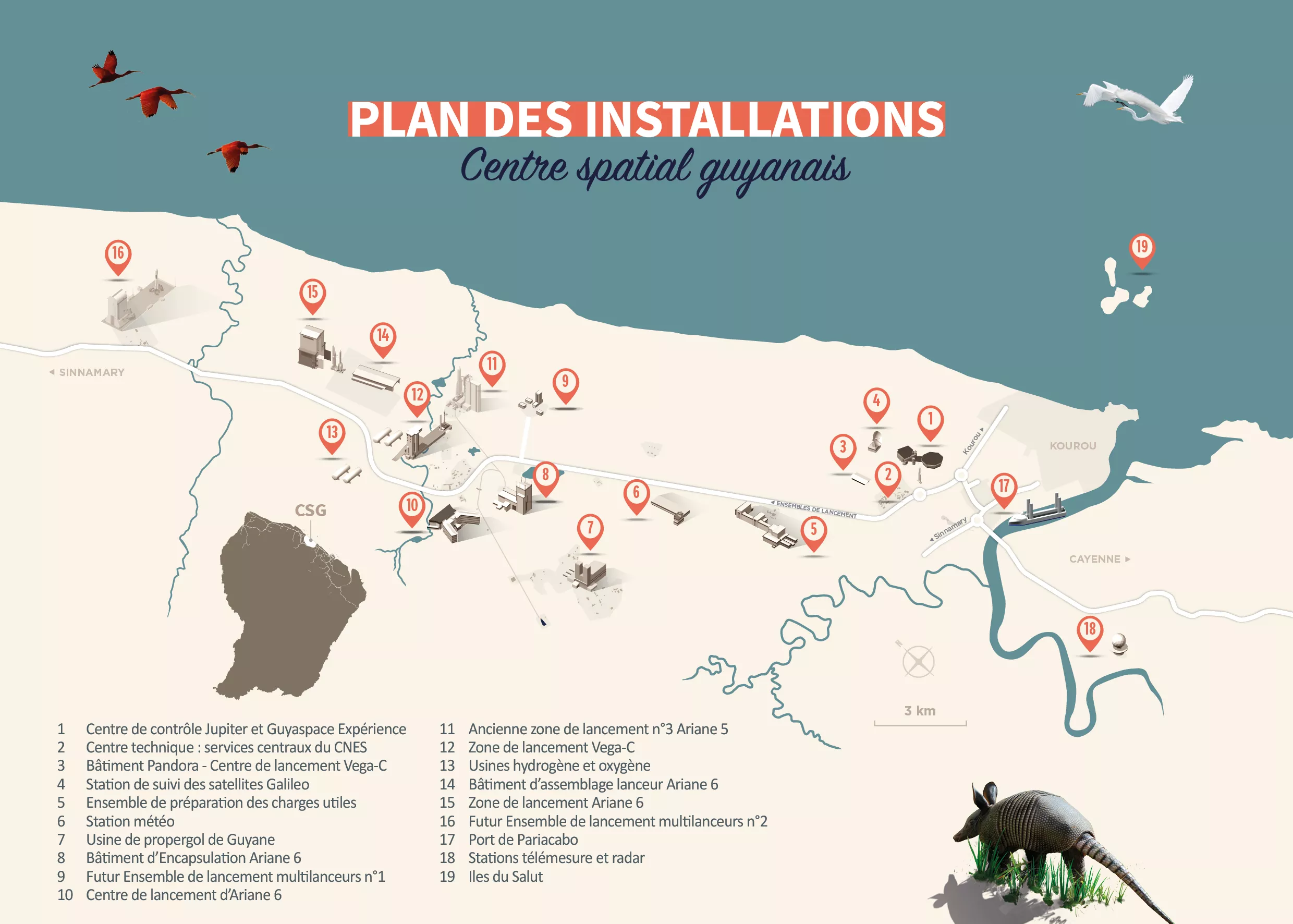
Ariane 6 facilities
The Launcher Assembly Building (BAL)
The BAL accommodates the launcher's main and upper stages to prepare them and make up what is known as the central body. Each of the stages is finalised (mechanical and fluid interfaces and battery charging), then the upper stage equipped with its Vinci engine, which arrives from Bremen (Germany), is assembled with the main stage equipped with its Vulcain engine, which arrives from Les Mureaux (France).
The BAL is a vast building, 117 m long, 47 m wide and 20 m tall. It is divided into two sections:
- A sheltered retrieval hall of around 1,600 m², which houses the containers for the Ariane 6 cryogenic stages manufactured in Europe. The containers are unloaded horizontally using Automated Guided Vehicles (AGVs), automated trucks guided by magnetic strips embedded in the ground.
- An assembly hall, with a surface area of 3,000 m² and air conditioning, where the two stages that form the central body of the launch vehicle are integrated horizontally. This hall can accommodate two central bodies at the same time. The assembly line used to integrate the stages is based on the one used to build Airbus A350 aircraft.
After assembly, the central body leaves the BAL and is transported horizontally using the central body transporter (TCC), made up of four AGVs and two cradles.
It takes 30 minutes to reach the launch pad, located 800 metres away.
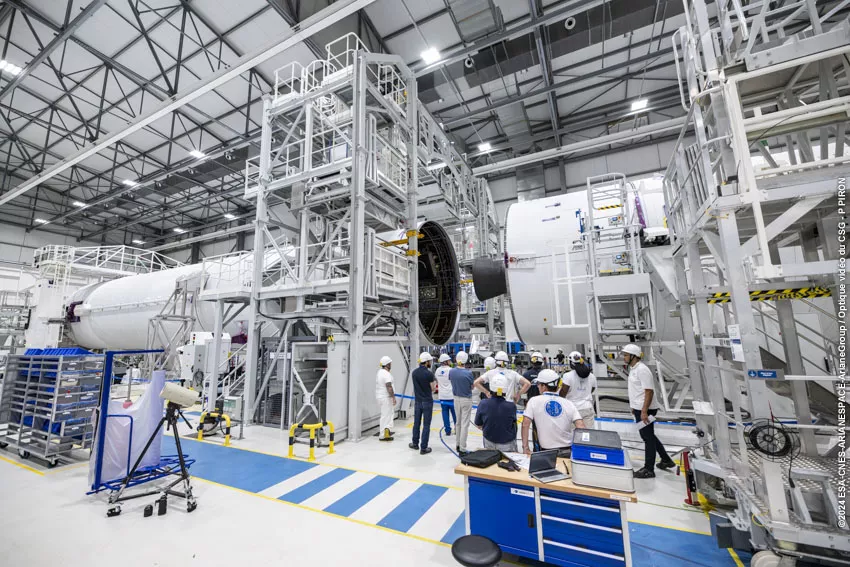
The launch pad
ZL4, from which Ariane 6 lifts off, is composed of several parts:
The foundation: an underground civil engineering structure that houses all the systems, which come together at the launch vehicle, such as the fluid and propellant systems, the electrical and control systems and the resources interfacing with the satellites.
The flame trenches: the two concrete structures on each side of the launch pad were designed to discharge combustion gases during lift-off and to reduce the harmful vibratory and acoustic effects on the launch vehicle and its passengers.
The fixed launcher platform: this is the 700-tonne steel base on which the launch vehicle stands. The platform is equipped with a 66-metre umbilical tower, on which the cryogenic arms are installed, 13 m long and 20 tons, at 38 meters high. They are connected to the launcher to ensure the filling of two stages of the central body of Ariane 6 in liquid hydrogen and oxygen, preserving these propellants at extreme temperatures up to -250 °C. At the moment of takeoff, these arms open in order to let the launcher pass.
The mobile gantry: the building housing the launch vehicle on its platform is 89 metres tall, 50 metres long and 49 metres wide. This behemoth weighs 8,200 tonnes and is equipped with an overhead travelling crane capable of lifting up to 45 tonnes.
- Its purpose is to allow access to the launch vehicle to finalise its preparation and protect it from the outside environment until lift-off. The boosters are assembled with the central body in this gantry, and the fairing containing the satellites is installed at the top of the launch vehicle.
- What makes it special is that it moves. It travels at a speed of 7 metres per minute thanks to motorised rollers. This gigantic structure reverses 120 metres along a dual track to release the launch vehicle before lift-off.
The water tower: it contains more than 1200 cubic meters of water, the equivalent of half an Olympic swimming pool. Connected to the mast and the launch table by a 2.5m diameter pipe, this tank is used to supply the impressive sprinkler system located at the foot of the launcher. 800,000 liters of water are discharged in a few tens of seconds at the time of takeoff to cool and protect the launch table from flames and sound vibrations. It is fed from a natural water reserve, the Nicole rock.
The four lightning protection masts: help protect the launch vehicle in the event of a storm when the gantry has moved back during the final phase of the launch sequence.
Discover the Ariane 6 launch area on video.
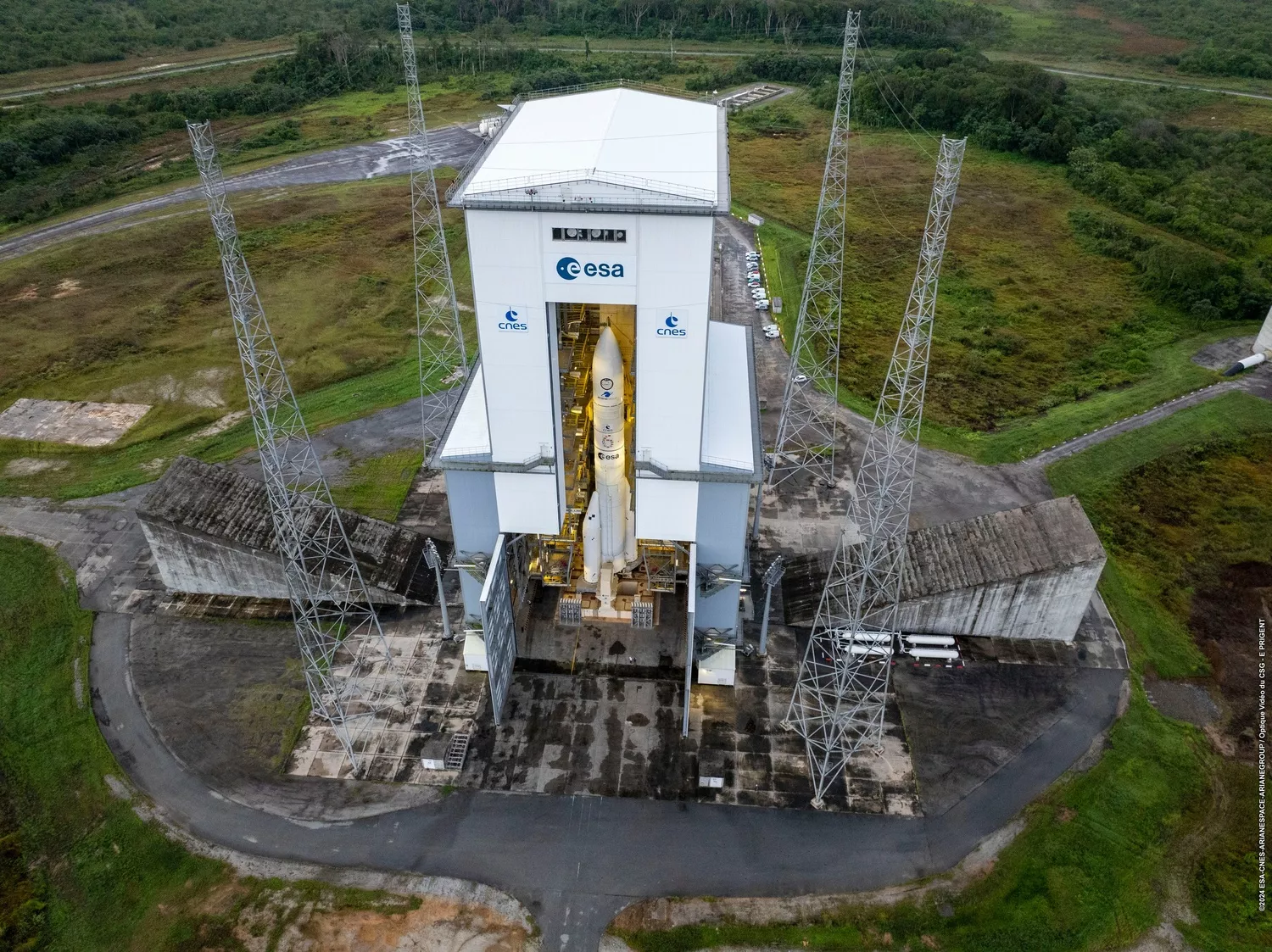
The booster zone
It is in this area that the solid rocket motor, which will become an Ariane 6 booster or the main stage of Vega-C, is manufactured.
After being produced by Regulus at the French Guiana Propellant Plant (UPG), the engine is assembled by Europropulsion at the Booster Integration Building (BIP). It will be finalized by ArianeGroup teams at the Booster Finishing Facilities, thus giving rise to an Ariane 6 booster.
The manufactured boosters are stored at the Booster Storage Building (BSB), which can accommodate up to 12 boosters simultaneously.
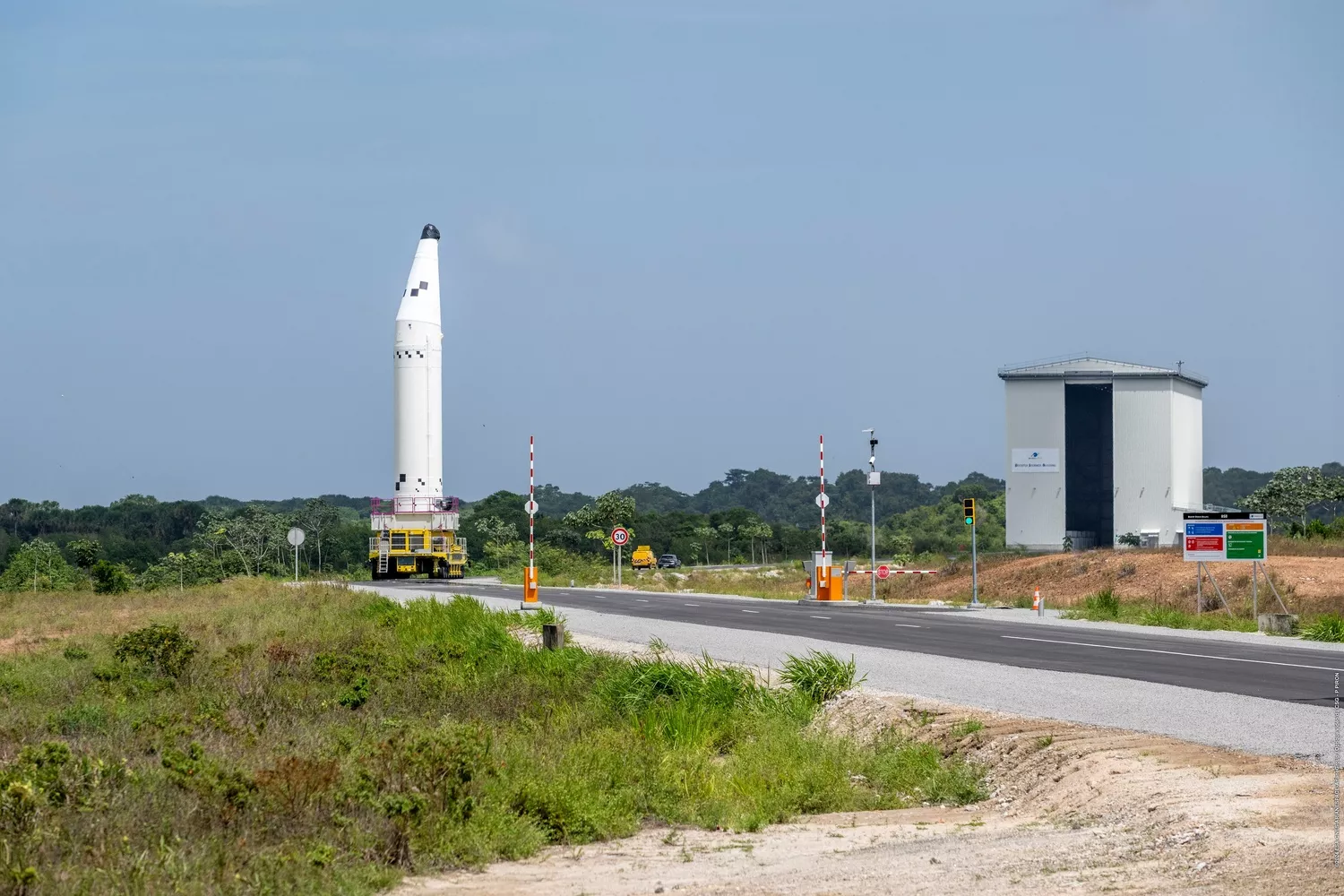
The Encapsulation Facility Ariane
Formerly used as the Ariane 5 Final Assembly Building (BAF), the encapsulation building has been refitted to become a key site in the Ariane 6 preparation campaign.
It is now used to assemble the upper part of the launch vehicle: the satellites and their adapters are firstly integrated before being placed under the Ariane 6 half-shells. Encapsulation involves bringing the two half-shells together and closing them around the payloads.
The operation takes place in the encapsulation hall, using a fixed metal structure 28 metres tall with a footprint of 202 m².
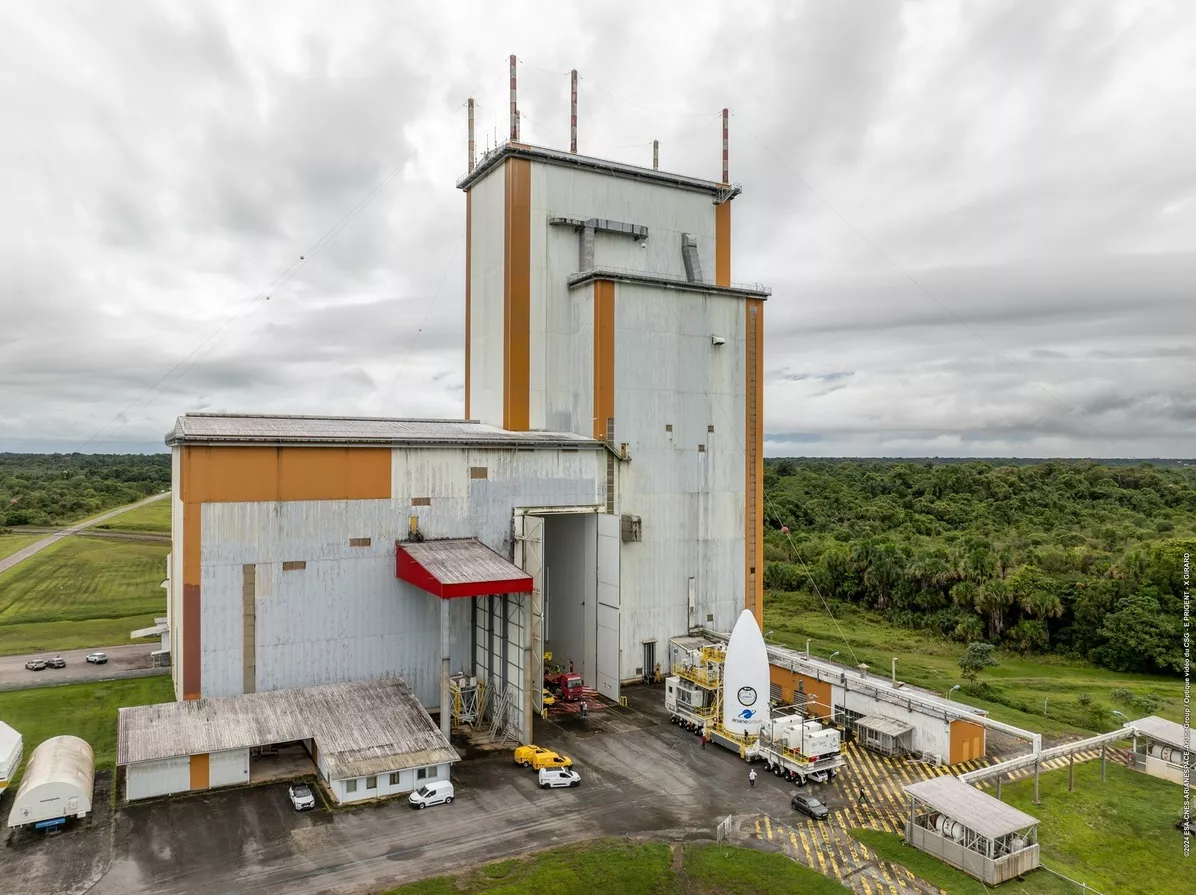
The cryogenic propellant storage area
The propellant stores (liquid oxygen and hydrogen) are used to fill the launch vehicle's cryogenic stages. These stores are supplied by mobile tanks filled in the Air Liquide Spatial Guyane (ALSG) production plants, already used for the requirements of Ariane 5 and Soyuz.
These stores are located on both sides of the launch zone, at a safety distance of 300 m. They are linked to the launch platform foundations by underground galleries.
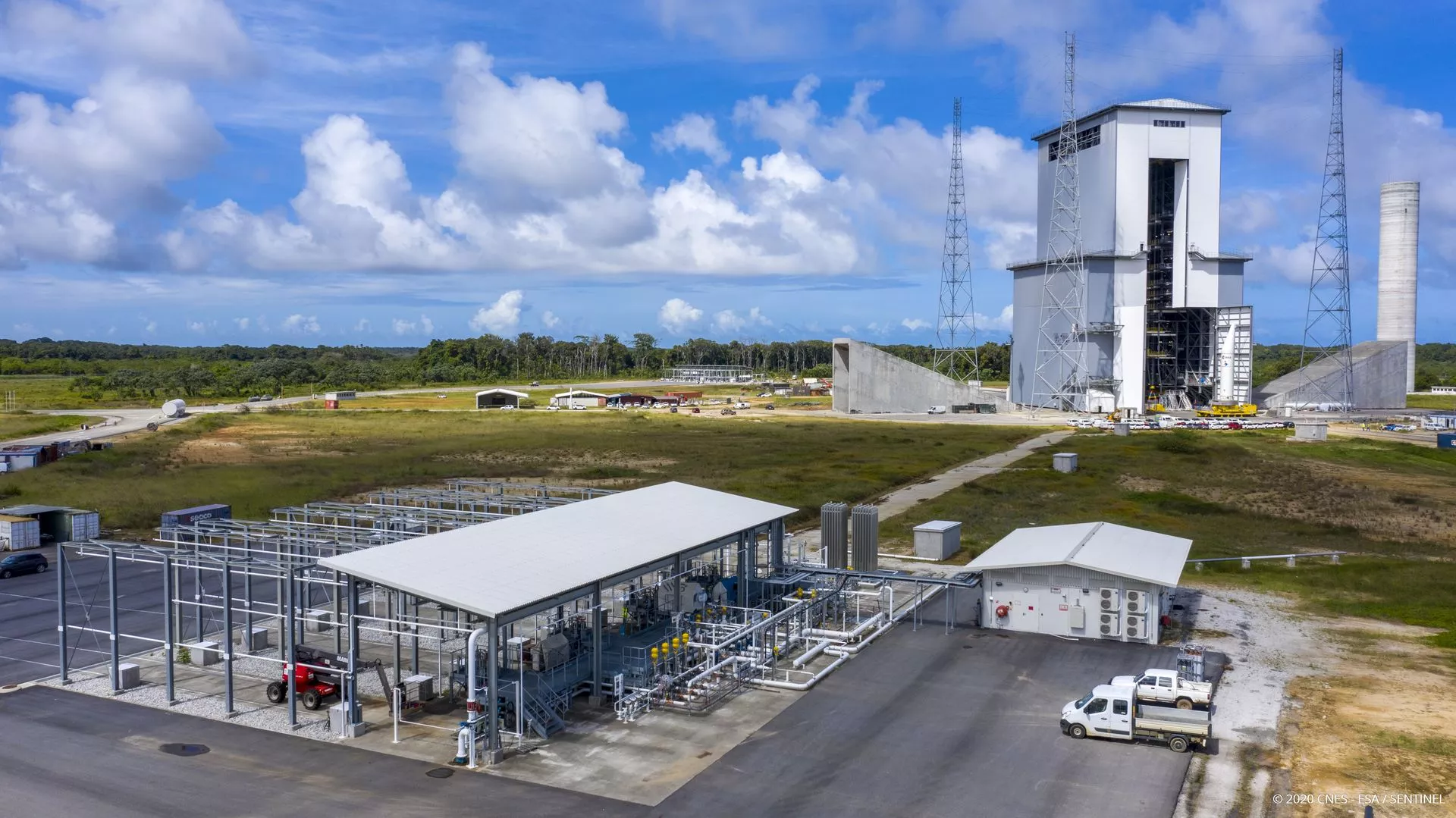
The ancillary services zone
The ancillary services zones support the functioning of the site. They consist of a power plant capable of delivering 4 MW of power, a hot water/chilled water plant for air conditioning and a water purification plant.
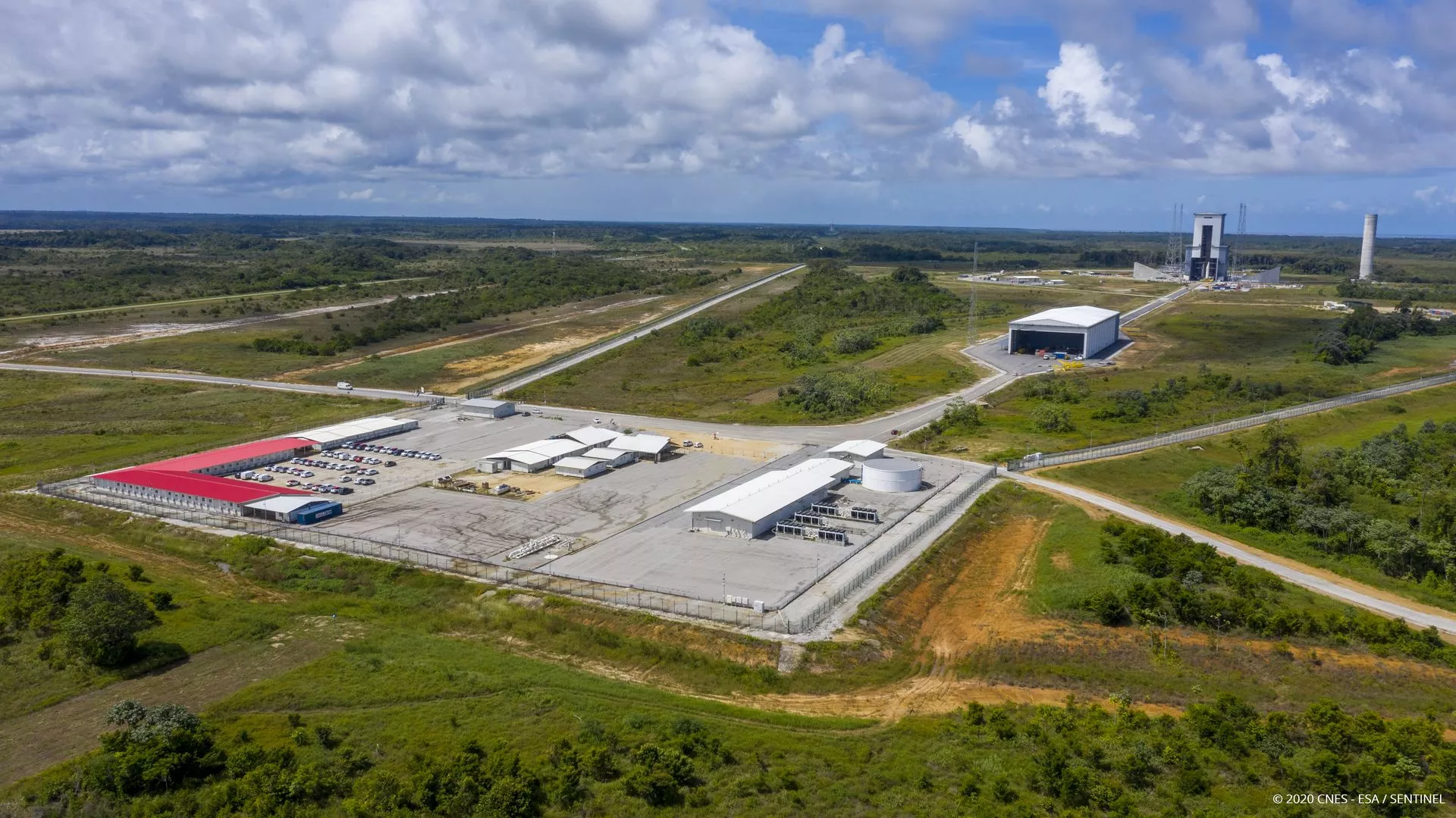
The pumping station
This station draws rainwater from a quarry to supply the water tower in the launch zone. After each lift-off, a treatment plant cleans up the water and sludge collected at the bottom of the launch pad flame trenches. The treated water is released back into nature after analyses certifying that it no longer poses a risk to the environment.
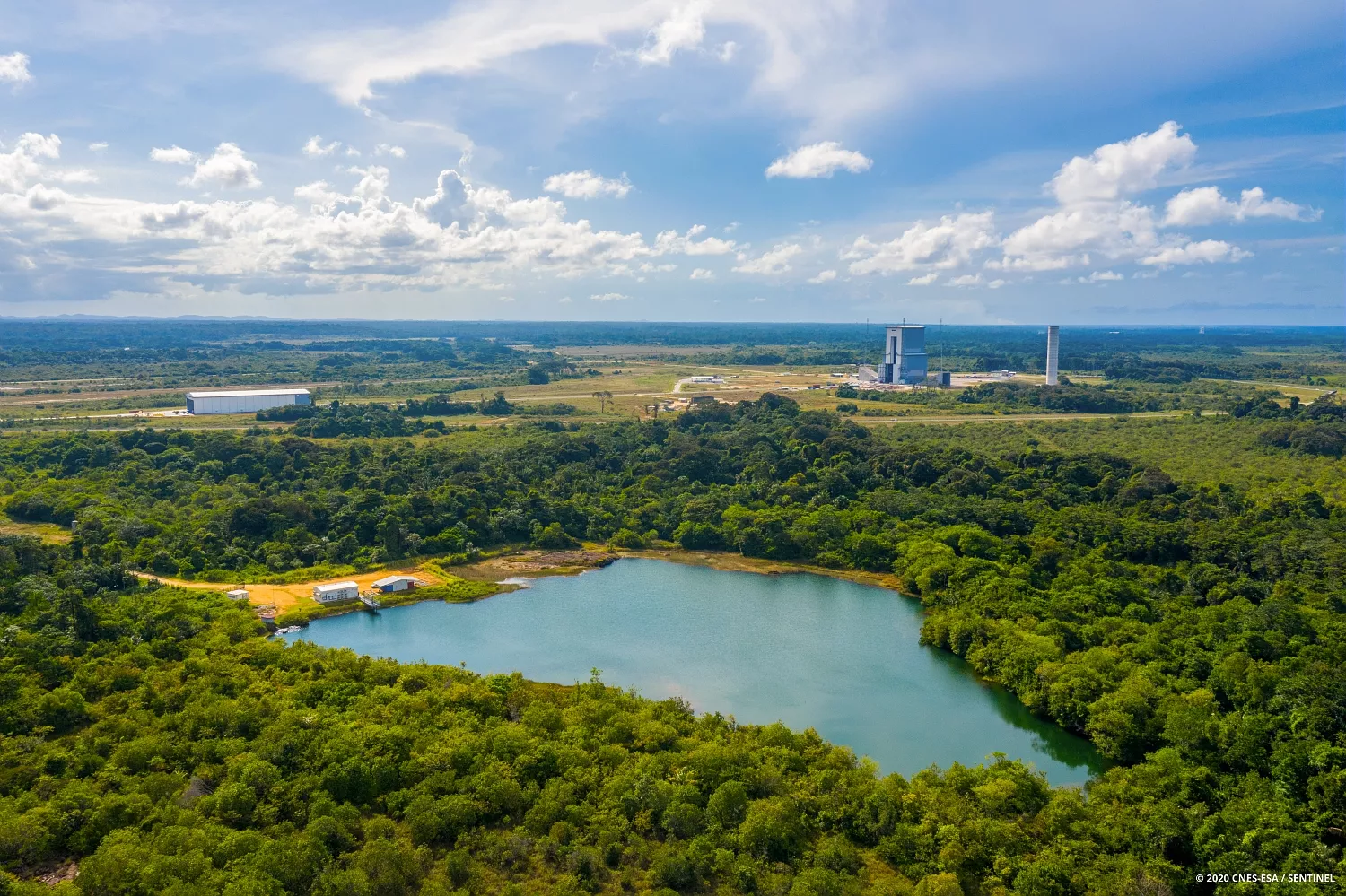
Vega-C facilities
The launch complex
The launch complex currently used for Vega-C launcher was built in 1970 to launch the Europa 2 rocket, and was later repurposed for Ariane 1, 2 and 3. On February 13, 2012, after 23 years of inactivity and 6 years of refurbishing, it returned to action for the inaugural launch of Vega.
The Vega Launch Complex (ELV) is a vast, open area of 8 hectares, comprising a single infrastructure.
It includes ancillary service buildings, which support a mobile gantry. The gantry is used to assemble Vega-C’s five components vertically (the four stages and the fairing) and to fill the fourth stage with liquid propellant. A few hours prior to H0, the gantry moves back to clear the way for the launcher.
Under the platform, two burners with a central deflector ensure the evacuation of hot gases during takeoff.
Around the gantry, four lightning protection masts protect the launcher in the event of a storm when it is exposed during the final phase of the launch sequence.
Preparation and installation of the satellite(s) in the fairing of the Vega-C launch vehicle are carried out in the S5 building of the Payload(s) Preparation Facilities (EPCU).
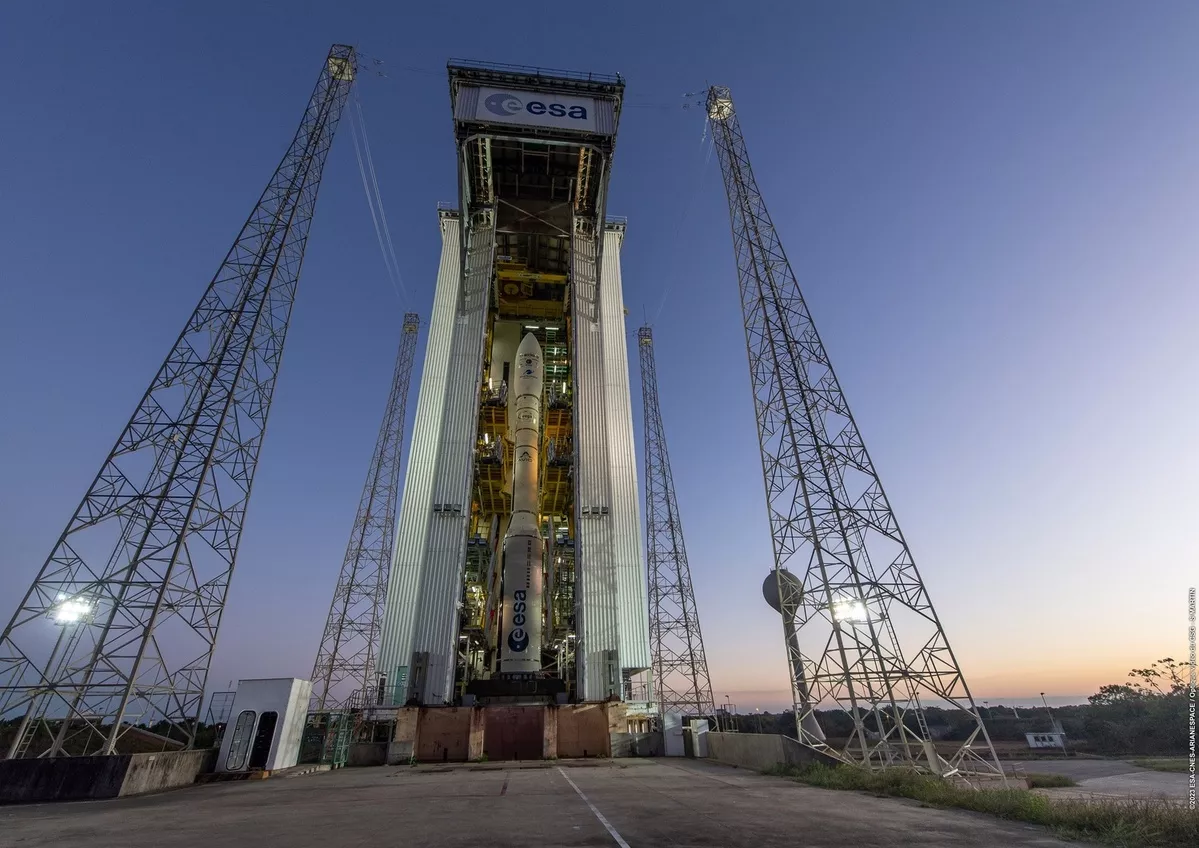
The booster zone
It is in this area that the solid propellant engine, which will become an Ariane 6 booster or the main stage of Vega-C, is manufactured.
After being produced by Regulus at the French Guiana Propellant Plant (UPG), the engine is assembled by Europropulsion at the Booster Integration Building (BIP), to become the first stage of Vega-C.
The P120C rocket motor may either be routed straight to the Vega launch pad or stored in the Booster Storage Building (BSB), which has two specific docks for this purpose.
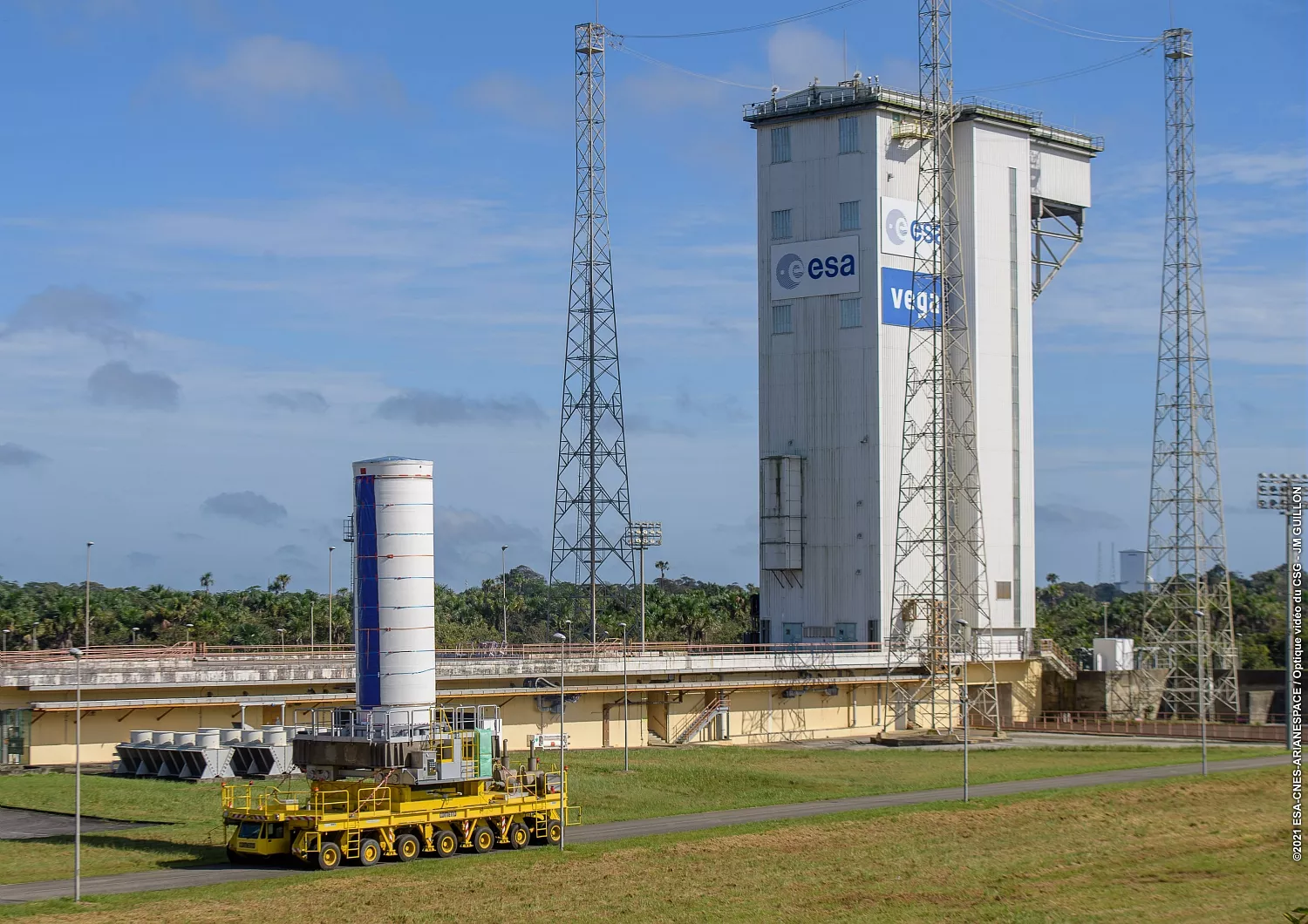
Multi-Launcher facilities
The Multi-Launcher Complex (ELM)
The Multi-Launcher Complex (ELM) is located on the site of the former Diamant launch complex. Once its overhaul is complete, it will accommodate the reusable launch vehicle, CALLISTO*, as well as commercial mini and micro launchers for which five New Space actors were selected, following the call for expressions of interest launched by CNES in July 2023.
The ELM covers 120 hectares. Further to refurbishment and adaptation (dismantling of mobile gantry crane, renovation and expansion of areas subject to earthworks, work on infrastructure and networks, etc.), some infrastructure has been re-assigned. For example, the former building used for the integration of the Diamant launch vehicle will house the integration of the CALLISTO demonstrator, in an air-conditioned tented area with a clean environment.
The ELM will accommodate five launch pads.
* CALLISTO is a reusable rocket first stage demonstrator developed jointly by the CNES, the German agency DLR and the Japanese agency JAXA. It is 12 metres tall and weighs three tonnes.
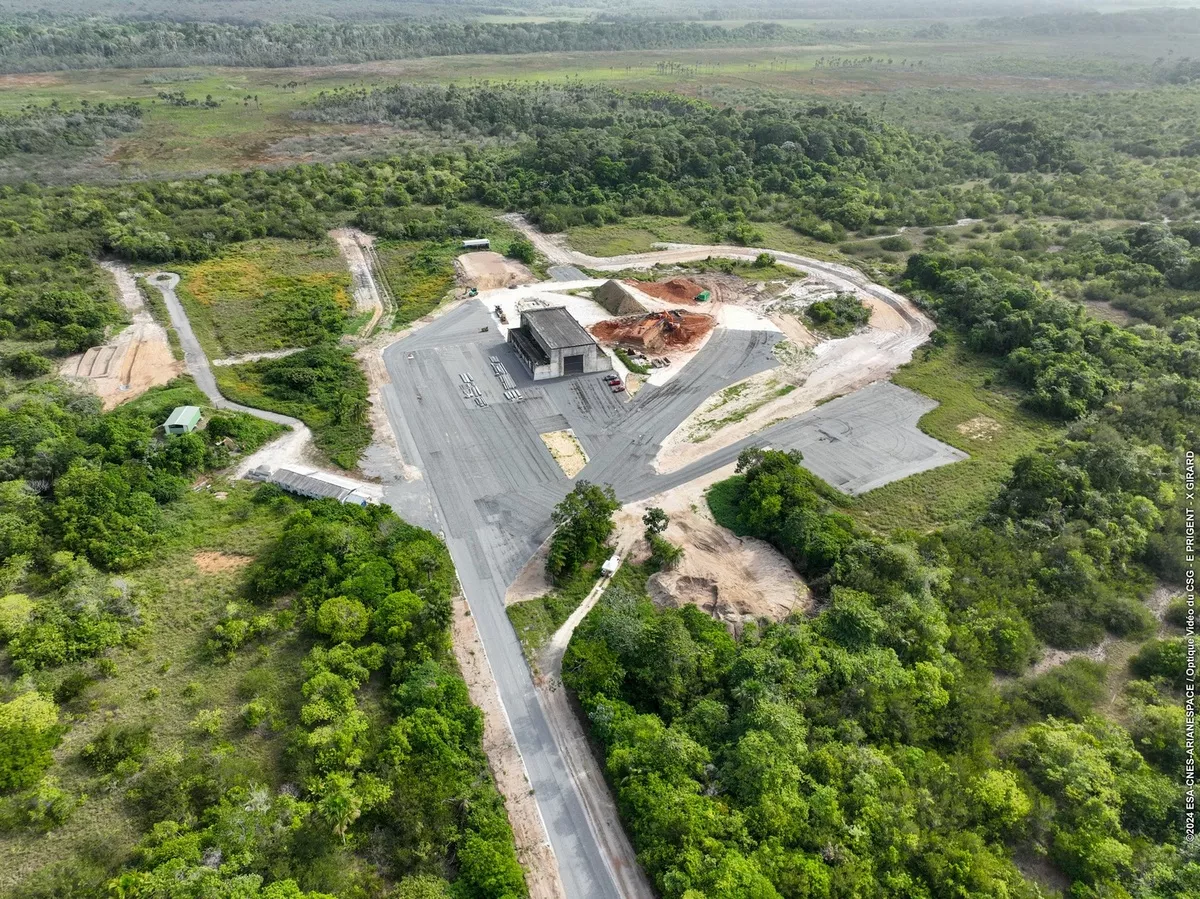
The former Soyuz Launch Complex (ELS)
The former Soyuz Launch Complex (ELS), once the refurbishments are complete, will house the Maia reusable small launcher as well as the winners of the ESA Challenge (ELC).
The European Launcher Challenge, launched by the European Space Agency in november 2023, aims to select several European launch services through a call for tenders. The winner of the challenge will get ESA support for the demonstration of his ability to develop and fly a service and have opportunities to bid for institutional launch service contracts.
The former Soyuz Launch Complex (ELS) is located to the north-west of the other launch sites, around 10 kilometres from the Ariane 6 launch site and around 15 kilometres from the Vega facilities and The Multi-Launcher Complex (ELM), former Diamant Launch Complex.
This launch complex will be able to accommodate two launch pads.
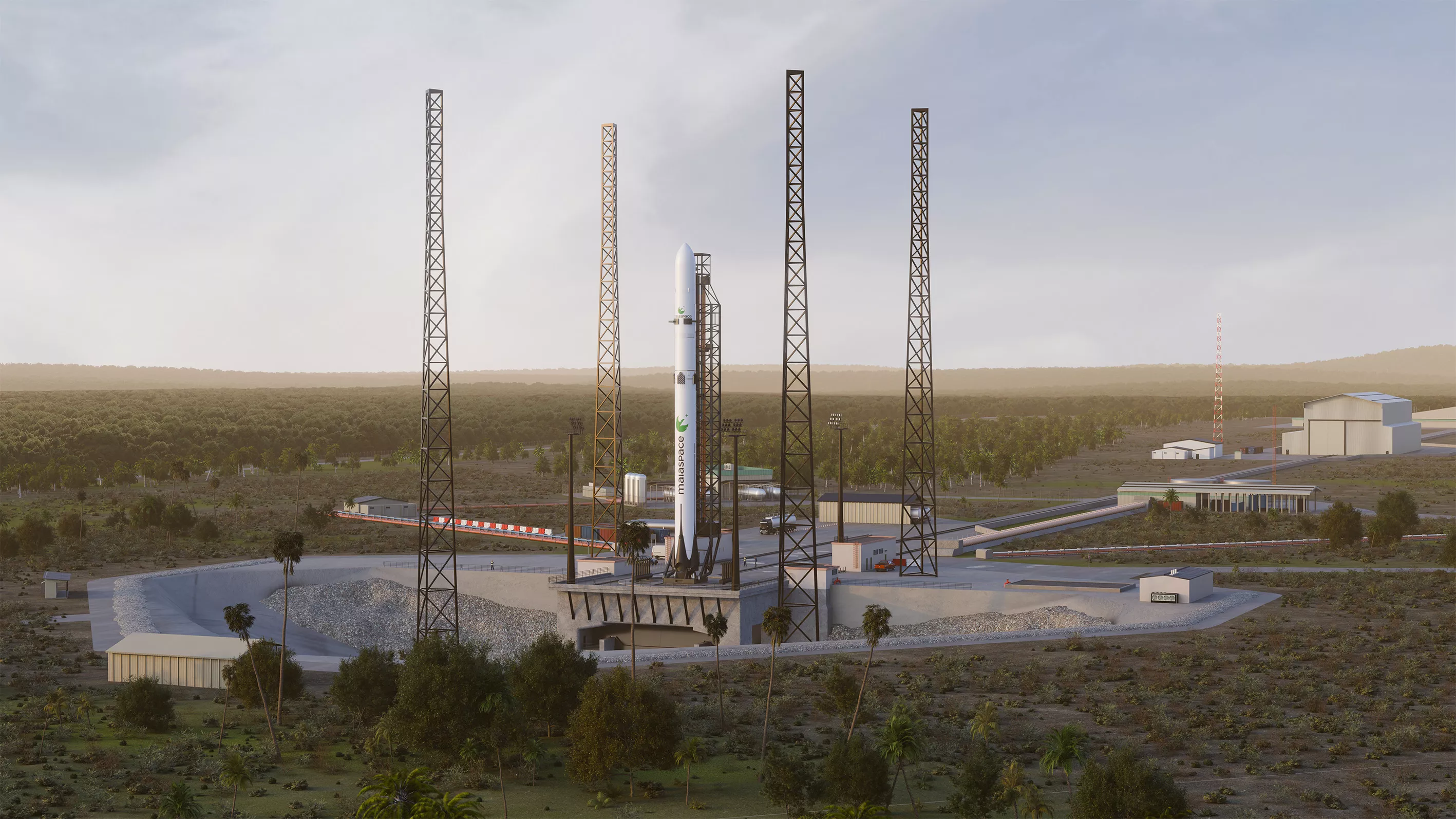
…and what about the future?
Initially, the former Ariane 5 launch site (ELA-3) will be renovated to temporarily accommodate the new Vega-E launch vehicle. The Ariane 4 launch site (ELA-2) will be permanently reassigned to the same launch vehicle.